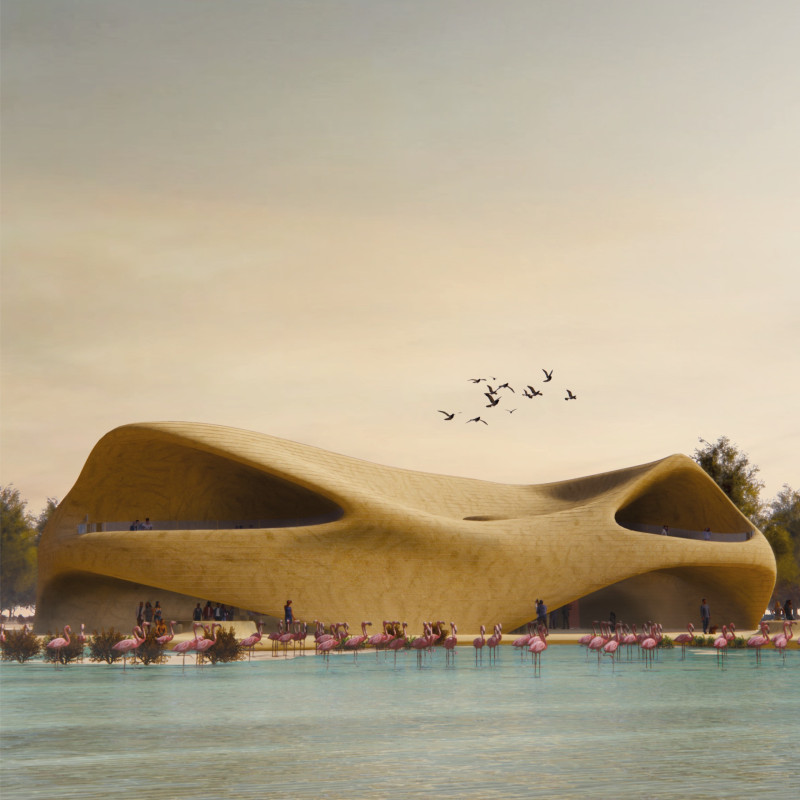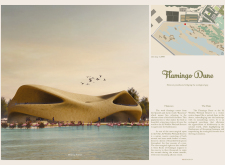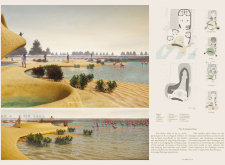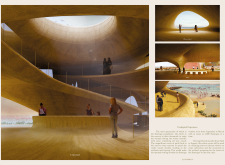5 key facts about this project
The Flamingo Dune Visitor Centre is located in the Al Wathba Wetland Reserve in the UAE. It provides a space for visitors to connect with the diverse wildlife, especially the seasonal migrations of flamingos. The design emphasizes its integration with the landscape, inspired by the natural forms of surrounding dunes and aimed at promoting ecological awareness.
Design Concept
The visitor centre acts as an ecological prosthesis, blending into the natural environment. Its shapes and lines mimic the contours of local dunes, creating a harmonious relationship with the landscape. This design approach supports ecological considerations and results in a functional space that enhances the experience for its visitors while highlighting the need to preserve local habitats.
Materiality
The selection of materials reflects a commitment to sustainability and local sourcing. Clay sourced from the wetland forms the primary construction material, creating a strong connection to the environment. Sand from the area, along with wood fibers from native desert trees, reinforces the dedication to low-impact building practices. Together, these materials contribute to the building's structural integrity while respecting the ecological context.
Seasonal Adaptability
The centre’s role changes with the seasons. From September to March, it becomes a prime location for observing the arrival of thousands of flamingos, offering an immersive experience for guests. During the quieter months from April to August, it shifts its focus to education, serving as a hub for teaching visitors about sustainable farming practices and the importance of the wetland ecosystem. This adaptability encourages ongoing interaction with nature and fosters environmental awareness.
The design incorporates passive climate control strategies that enhance comfort in the hot desert environment. The natural forms promote ventilation, allowing air to circulate freely throughout the building. This consideration for environmental conditions makes the visitor experience more enjoyable, while also reducing the reliance on mechanical cooling systems.






















































